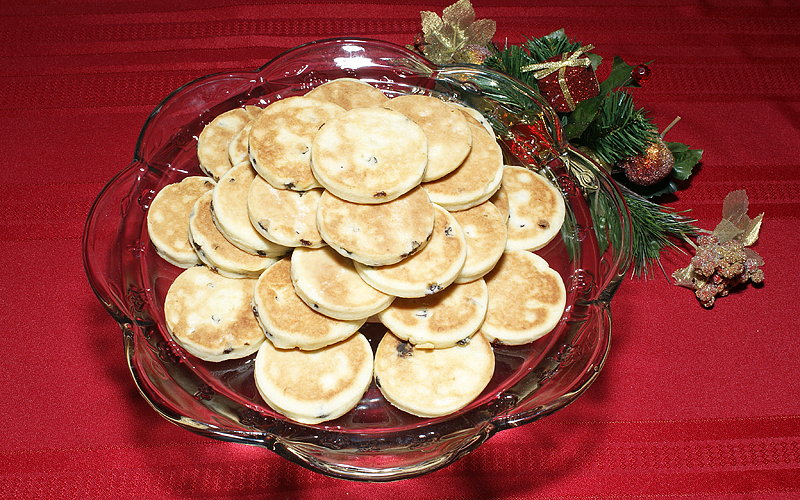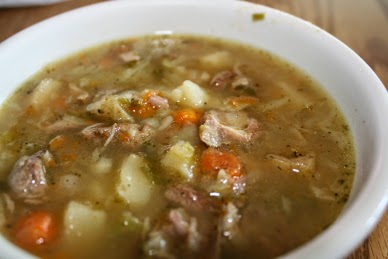August 28: the deportation of the Germans of the volga
By Leandro hildt
Eldiaonline. Com
By Leandro hildt
Eldiaonline. Com
As of 1764, they formed in both margins of the volga river 106 German agricultural colonies. The people who lived there formed the sociocultural compact known as Germans of the volga.
They arrived at that place invited by Catherine II of Russia, called "the great", Who gave them a series of privileges to convince them to move to that place. The main activity of these colonies was agriculture and livestock. They had to spend 100 years of hard work and sacrifice to achieve true well-being and stability. Then, the tsar Alexander ii began to cancel the privileges granted by Catalina. In 1874, he released a manifesto which, among other things, established the compulsory military service that lasted several years and the introduction of the Russian language in schools, which until that time kept the German language. This attempt of russification of the Germans, that they maintained their customs and religion from the beginning, he made that some decided to leave the volga and search for other countries to live.
In 1877, nicolás avellaneda enacted the immigration act in Argentina, and the news came to the Germans of the volga, which began to arrive from the end of 1877 and the beginning of 1878 to found in our country a series Of Villages. In addition to Argentina, also received volga German immigrants the United States, Brazil and Canada; but hundreds of thousands of Germans were in Russia. Those who left the tsarist empire were a very small percentage of all the inhabitants of the area of the volga.
The Russian Empire was abolished in 1922 and formed the union of Soviet Socialist Republics (USSR). Some were still trying to get out of Russia until this was no longer possible starting in 1929 by a decree of Joseph Stalin. More than a million Germans were in the Soviet Union. Under Communism, the villages of the volga Germans came to form first an autonomous region, and on 6 January 1924 was constituted the autonomous Soviet Socialist Republic of Germans of the volga. Its capital was pokrovsk that in 1931, adopted the name engels. This Republic lasted until 28 August 1941, the year in which it was liquidated by another decree of Stalin. The Germans of the volga were falsely accused of being spies and collaborators of Hitler. A third of the Germans of Russia was shot and all the others were deported en masse to Siberia, Kazakhstan and Alma-ata on the border with China. They took all the civil rights.
The day following the publication of the ill-fated decree, all the families of all the villages were informed that they had to leave their animals, houses and belongings because they would be deported on the following hours. Some had no more than 20 minutes to prepare. In a short time, soldiers came in cars to load to people and take them to the train station, from where they would be sent. Those who were able, had prepared luggage with clothes, food and things that they considered necessary, but to those who had a lot of luggage the soldiers are removed and tossed. The elderly and children could be sitting in the cars, the rest I was walking. Some survivors say that in the villages where they took more heading could see the suffering of the cows with the udders full of milk, without which no one could be milked, because they were guarded by the soldiers who were not allowed to do anything. Those who had time, took advantage of for baking bread for the trip. When they arrived at the station, they were sitting on the floor, some in the open, huddled and surrounded by the soldiers. When the train came, they saw that they were wagons for the transport of animals. They all had to come up. They made him crying and complaining about the abuse
The journey of the horror
The trip was terrible, cold, dirty, in some cases lasted up to two months. Many died for diseases or frozen by the brutal cold. The Deceased persons remained in the wagons or simply were thrown by the tracks. When they arrived to their new destinations, there were cars waiting to take them to their final destination. Many were some days in the open, no nothin ' to be protected from the wind, the rain, snow and the cold. The men and young men were mobilized for the army of work, a form of forced labour with strict military control, high demands and hard as hell punishments. Women and teenage girls they'd be felling trees and the aserraban in the woods, that the boys younger drew with horses. Older women and children wove networks for fishing. All the work is hindered by a high layer of snow of up to 1,20 M, the cold, the wind and hunger. The food that they received was barely 400 g of bread and salted fish. The one that was 10 years old or more and didn't work, it did not receive the bread. All the work was guarded by soldiers who did meet to force of screams and blows. In a few months, half of the Germans died. As the earth was frozen up to a meter deep, people don't have the strength to bury their dead and just the covered it with snow. Frequently came the dogs, carve the snow and he ate the bodies. The banished and prisoners were living in barracks that they themselves had to build or in caves where they died frozen. The Barracks were very precarious and not protected from the rain. All the time the floor was a mud. The temperatures reach 40 degrees below zero.
This was the tragic situation of the Germans of the volga that did not have the luck out of Russia in time. They spent a lot of things more, so terrible and even worse than the deportation. It's hard to say how many died under those circumstances. Were thousands and thousands. In spite of this massacre of thousands of Germans, Russia couldn't make disappear completely to the Germans of the volga. Some survived, and their descendants who we are, we have preserved with pride their culture, their language and their ethnic identity. Every 28 th of August we recall with sadness to all the Germans who died of the volga unfairly because of the dictator Joseph Stalin.
Once dead the dictator absolute and initiated a process of de-stalinization, in 1964, the Soviet government recognized that the Germans from Russia had not been saboteurs, but the damage was already done. In addition, there were impediments to return to the villages of the volga, meanwhile occupied by Russian, and the Germans were never compensated for their losses and suffering. The USSR NEVER PAID compensation to the victims and their families by cutting out the life, health, property, the honor and his identity.
The text of the decree of Stalin
" the disposal of the president of the supreme Soviet of the union of the Soviet Republics on the transfer of the Germans who inhabit the territory of the volga. According to accurate references received by the military forces, we take knowledge that thousands of subversives and spies are among the inhabitants of the territory of the volga waiting for a sign from Germany to provoke terrorist acts in the region occupied by the Germans. Any German who inhabit the area informed the Soviet authorities on the existence between them of such a huge amount of subversives and spies. Thus the German population of the territory of the volga hides the presence of enemies of the Soviet people and of Soviet power. In the case of that by orders of Germany's disturbing and spies to carry out terrorist acts, both in the republic of the Germans of the volga as in neighbouring regions, the Soviet government in accordance with the laws of the time of war, will be forced to suppress All the Germans of the volga. Preventing unwanted these expressions, and not to shed blood in vain, the chair of the supreme Soviet of the Soviet Union, decided to the need to move to all the German settlers living in the territory of the volga. Therefore expatriates will receive land and state aid to be established in the new region. For this settlement were allocated the fertile land of novosibirsk and Omsk Altai District, Kazakhstan and other places neighbors. Unanimously with these measures are proposed to the state committee for the defence territorial, perform immediately the transfer of all Germans of the volga and provide high-land and useful of work for his new and safe place.
The President of the supreme Soviet of the Soviet Union, m. Kalinin
The Secretary of the supreme Soviet, a. Gorkin
Moscow, Kremlin, 28 August 1941 "
Julius Caesar Melchior.
Julius Caesar Melchior.







 Otoe County, Nebraska is rich in history and tradition, and was one of the first counties established in the Nebraska Territory. It hosts several prominent landmarks and famous personalities in Nebraska history, to include Arbor Lodge and J. Sterling Morton of the Nebraska City area. The Otoe County Courthouse is the oldest public building in Nebraska. It was erected 1864. Our society is dedicated to ensuring that our Otoe County heritage is remembered, our communities are preserved, and our ancestors are acknowledged for the sacrifices they made to become an important part of the Great State of Nebraska.
Otoe County, Nebraska is rich in history and tradition, and was one of the first counties established in the Nebraska Territory. It hosts several prominent landmarks and famous personalities in Nebraska history, to include Arbor Lodge and J. Sterling Morton of the Nebraska City area. The Otoe County Courthouse is the oldest public building in Nebraska. It was erected 1864. Our society is dedicated to ensuring that our Otoe County heritage is remembered, our communities are preserved, and our ancestors are acknowledged for the sacrifices they made to become an important part of the Great State of Nebraska.



